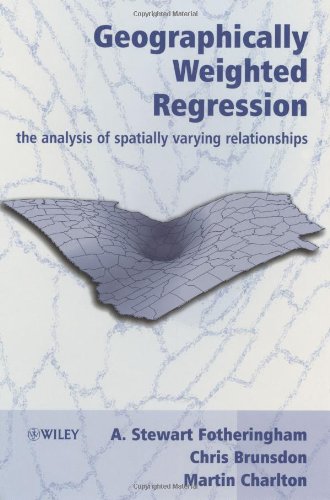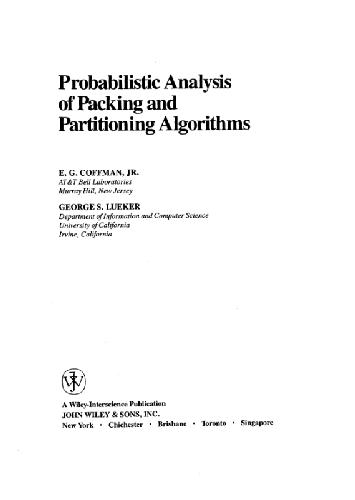A. Stewart Fotheringham, Chris Brunsdon, Martin Charlton9780471496168, 0471496162
Geographically Weighted Regression: The Analysis of Spatially Varying Relationships is based on the premise that relationships between variables measured at different locations might not be constant over space. The prevailing assumption is that such relationships are constant, an assumption that would appear to be the result of convenience rather than of any serious examination of the issues. If relationships do vary significantly over space, then serious questions are raised about the reliability of traditional, global-level analyses.Geographically Weighted Regression, as part of a broader research area in local modelling, provides a new analytical tool and a different perspective on spatial analysis. Instead of being restricted to simple global analyses in which interesting local variations in relationships are ‘averaged away’ and unobservable, GWR allows local relationships to be measured and mapped. In many ways the output from GWR is similar to that presented by a microscope: previously unimagined detail suddenly comes into focus. This book challenges many of the global statements of spatial relationships that have been made in the academic literature.Geographically Weighted Regression: The Analysis of Spatially Varying Relationships contains a broad discussion of local models in general and of the details of GWR, and provides many empirical examples on issues such as house price determinants, educational attainment levels and school performance statistics. A unique accompanying feature of this book is the author-written software that allows users to undertake sophisticated and complex forms of GWR within a user-friendly, Windows-based, front-end. This software is readily available from the authors and notes on using the software and an example application are documented in the book itself.Geographically Weighted Regression: The Analysis of Spatially Varying Relationships is an essential resource for quantitative spatial analysts and GIS researchers and students. It will be of interest to researchers in any discipline in which spatial data are used across the broad spectrum of social sciences, medicine, science and engineering. The underlying message is that locality is important and measuring local relationships is vital to understanding spatial processes. | |







Reviews
There are no reviews yet.